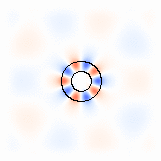Silicon Photonics Laboratory
| Name of the course | Online | Lecture | Exercises | Lab |
|---|---|---|---|---|
| Silicon Photonics Lab | ✓ | ✗ | ✗ | ✓ |
Context
Preliminary Courses/Knowledge:
- Fundamentals of Mathematics (at high school senior grades level)
- Fundamentals of Physics or Electrical Engineering [w3]
- Programming with shell script at average level
Recommended Preliminary Courses:
- Introduction to Optics [w3]
Follow-on courses:
- Electromagnetic Simulation Laboratory [w3]
Details
The Silicon Photonics Laboratory is organized in two parts. Part One is a virtual classroom education on the theory. Part Two is the practical lab training where students design and simulate selected silicon photonic components using off-the-shelf optical simulators.
Each lab is focussed on a specific photonic building block shown in the table below. The lab exercises are incremental and build up on each other. After a brief introduction to the theory of the building blocks, participants develop a model, perform a simulation and adapt design parameters to optimize device performance.
The course utilizes the software packages MEEP. The simulator is available on Linux and Windows and free of charge.
Having completed the course, students should understand the basic functionality and the design parameters of the components. They should be able to set up the simulation environment, create a model and stimulus, simulate and generate outputs, analyze and optimize a design.
The course is offered in a virtual classroom. Students attend at the campus or from home on their individual preferences. It is an advantage but not mandatory to complete the course Optics and Photonics before enrolling for this course. Basic programming skills are absolutely required (shell script, python).
Course Records
| Lecture | Content | File |
|---|---|---|
| Introduction to the theoretic part for Student's Guidance | [PDF] | |
| 1 | Classification of problems and finite differencing | [PDF] |
| 2 | Classification of systems and introduction to Fourier optics | [PDF] |
| 3 | Finite differencing schemes for partial differential equations | [PDF] |
| 4 | The Finite Difference Time Domain Method | [PDF] |
| 5 | The Beam Propagation Method | [PDF] |
| 6 | The Wave Propagation Method | [PDF] |
| 7 | The Vector Wave Propagation Method | [PDF] |
Laboratory Exercises
| Lab | Content | Download |
|---|---|---|
| 1 | Plane Wave and Gaussian Sources | [.tar.gz] |
| 2 | Reflection at plane interface | [.tar.gz] |
| 3 | Waveguides | [.tar.gz] |
| 4 | Splitters & Tapers | [.tar.gz] |
| 5 | Grating Couplers | [.tar.gz] |
| 6 | Fabry Perot and Ring Resonators | [.tar.gz] |
| 7 | Circular Grating Outcoupler | [.tar.gz] |
1. Free Space Propagation

Free space propagation of Continous and Gaussian Sources with variations in the propagation vector, wavelength (frequency) and spectral width. Perform a spectral analysis of plane waves and Gaussian beams for vertical and oblique incidence. Align the results with the Fourier Theory and investigate the effect of Perfectly Matched Layer (PML) or Absorbing Boundary Conditions (ABC). Simulate with time stepping and cw-solver. Discuss symmetry settings.
2. Plane Interface

Derive the Fresnel Coefficients from a simulation of reflected and transmitted field amplitudes over a range of spatial frequencies. Use a Gaussian Pulse to obtain the impulse response of the interface. Derive reflected and transmitted field amplitudes over the angle of incidence. Compared results to a simulation with plane waves. Develop an anti-reflection coating from impulse response analysis.
3. Waveguide

Model a Straight Waveguide and calculate radiation losses. Perform a variation of wavelength and contrast, i.e. refractive index ratio of core and cladding. Verify that mode confinement is only reached with total internal reflection and that only a discrete set of modes are carried by the waveguide due to phase alignment (resonance/standing wave) conditions at the waveguide boundaries. Optimize the waveguide for monomode propagation and analyze the energy flux. Plot transmittance and reflectance over spectral range.

Model and simulate a rectangular and circular Waveguide Bend and analyze the energy flux. Parametrize the bend and determine the maximum bend angle for mode confinement. Determine the normalized energy flux of transmitted fields over spatial frequency and determine the waveguide losses. Compare the performance of orthogonal and circular bend. Photonic Crystal Waveguides are optional if time permits.
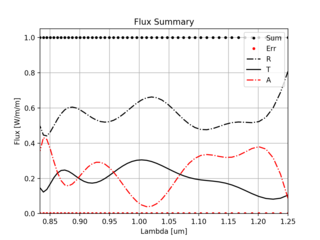
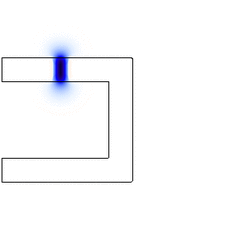

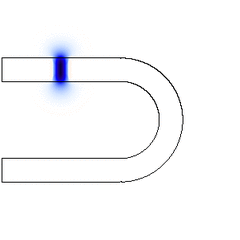
4. Splitter & Taper
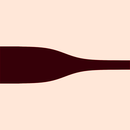
Model and optimize a Waveguide Splitter to achieve a maximum trans- mittance and compare performance for two design points. Optimize a Waveguide Taper to achieve a maximum transmittance. Understand how taper and splitter shapes (linear, exponential, etc.) affect their operability. Investigate how device performance is influenced by source misalignments. Perform parameter variations and performance evaluations.

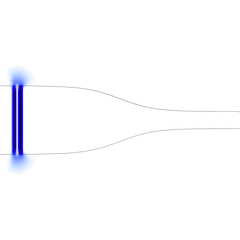
5. Grating Coupler

Model and optimize a one-dimensional Grating Coupler. Analyze the spectrum of transmitted and reflected beam. Show the dependency of grating parameters to diffraction orders. Attach a waveguide to the grating and analyze the coupling efficiency. Explore the design space and identify an optimal solution for a maximum transmission. Investigate the interdependency of wavelength, angle of incidence and grating pitch (width).

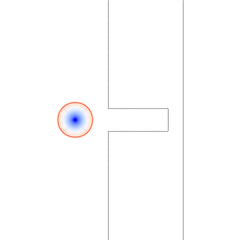
6. Fabry Perot & Ring Resonator
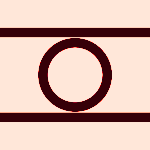
Investigate the theory of Fabry Perot resonators. Develop a Ring Resonator to selectively filter wavelengths. Use the theory of ring resonators to verify the conditions of resonance. Engineer a design to selectively filter one of two wavelengths. Use two Gaussian sources and perform a mode analysis of the input and output spectrum. Evaluate the results and optimize the design for a maximum mode separation. Use the material parameters and dimensions of a standard CMOS SOI technology.
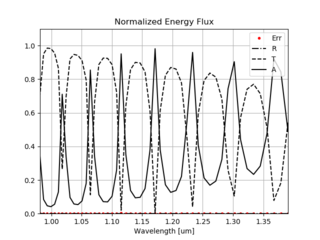
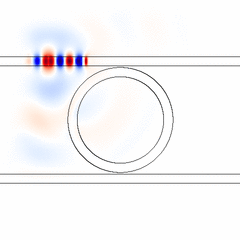
7. Nonlinear optimization of a bragg-grating outcoupler
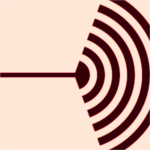
This exercise is intended for participants with a solid background in Silicon Photonics, Optics and experience in Pyton and Shell programming. The bragg-grating outcoupler is designed in three dimensions. A parameter configuration shall be found for maximum outcoupling power using a nonlinear optimizer, e.g. nlopt. The corresponding radiation patterns are obtained from the Poynting vector in a far-field analysis. The optimizer is supposed find a power maximum for a user-defined range of angles.
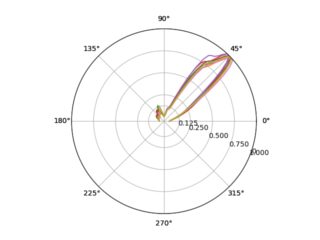
Helpful Links
[1] MEEP install guide[2] Python documentation for MEEP
[3] Python documentation for HDF5-Format
[4] Managing Python libraries with Anaconda
[5] MIT Photonic Bands (MPB)
[6] Python documentation for MIT Photonic Bands (MPB)
[7] NumPy Reference, a scientific computing package for Python
[8] About MEEP and VWPM.
Literature
[1] Principles Of Optics, Born & Wolf, Cambridge University Press, ISBN 0-521-64222-1[2] Fourier Optics, Goodman, Roberts Publ., ISBN 0-974-70772-4
[3] The Finite-Difference Time-Domain Method, Taflove, Artech House Inc., ISBN 1-580-53832-0
[4] Engineering Optics With Matlab, Poon & Kim, World Scientific Publ. Co, ISBN 9-789-812-56873-1
[5] Optics, Hecht, Addison-Wesley Publ., ISBN 9-780-805-38566-3
